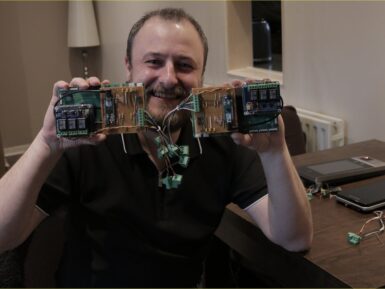
Overview
Based on the ESP8266 Wi-Fi transceiver module and the CH340 USB converter chip, this compact (Open Source) development and prototyping board is ideal for IoT applications.
The Wi-Fi module is compatible with the 802.11 b/g/n standard at 2.4 GHz, has an integrated TCP/IP stack, 19.5 dBm output power, data interface (UART / HSPI / I2C / I2S / Ir Remote Control GPIO / PWM) and PCB antenna.
It also has a micro USB connector and reset button. Programmable with Arduino IDE, it includes interpreters for processing commands for languages such as LUA.
Tech specs
- Model: ESP8266-12E
- Wireless Standard: 802.11 b/g/n
- Frequency range: 2.4 GHz - 2.5 GHz (2400M-2483.5M)
- Wi-Fi mode: Station / SoftAP / SoftAP+station
- Stack: Integrated TCP/IP
- Output power: 19.5dBm in 802.11b mode
- Data interface: UART / HSPI / I2C / I2S / Ir
- Remote Control GPIO / PWM
- Supports protection mode: WPA / WPA2
- Encryption: WEP / TKIP / AES
- Power supply: from 4.5 VDC to 9 VDC (VIN) or via micro USB connector
- Consumption: with continuous Wi-Fi transmission about 70 mA (200 mA MAX) - in standby < 200µA
- Operating temperature: from -40°C to +125°C
- Dimensions (mm): 58×31.20×13
- Weight: 10 grams
Conformities
Get Inspired
trying to understand how to convert serial data to digital data onb arduino micro

Whether granting access to public transit or restricting unauthorized personnel in buildings, NFC card readers can be extremely useful. Although most might not consider how they work – and simply happy getting through a turnstile – there’s a lot going on behind the scenes. In his video, Daniel Raines shows off a pair of prototype access control units (ACUs) that he’s constructed. The two networked devices are each based on a Raspberry Pi Compute Module 4 along with an Arduino Micro that controls six relays to allow or deny entry, provide feedback, fire, and lock up. More details on the project can be found in Raines' clip below.






